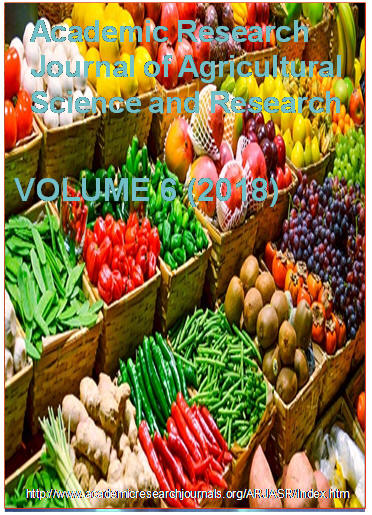| ARJASR |
Academic Research Journal of
Agricultural Science and Research |
||||||||||||||||||||||
|
Academic Research Journal of Agricultural Science and Research Vol. 6(1), pp. 47-51. January, 2018. ISSN: 2360-7874 DOI: 10.14662/ARJASRD2017.072 Full Length Research Effect of industrial wastewater irrigation and NP Fertilizers on yield and yield components of Bread wheat (Triticum aestivum L.) under greenhouse condition
Amare Tadesse1, Dawit Habte1, Kassu Tadesse1 and Wubengda Admasa1
1, Ethiopia Institute of Agricultural Research, Kulumsa Agriculture Research CenterCorresponding Author’s email: amare.ashu22@gmail.com, kasstad96@yahoo.com
Accepted 17 October 2017
In order to
study the effects of Barley washed out wastewater with different levels
of inorganic fertilizers on growth, Yield and Yield Components of Bread
Wheat (Triticum aestivum L.), Pot experiment was conducted during
February–July, 2014 under greenhouse condition at Kulumsa Agricultural
Research Center. Factorial combination of five levels of irrigation
water and four levels of NP fertilizers rate were used as treatments and
laid out in CRD design with three replication. Analysis of variance
illustrated that the use of barley washed out wastewater (blended water)
for irrigation purpose resulted better growth, yield and yield component
in comparison with natural water irrigation. The main effect of
irrigation water was showed highly significant (p<0.01) effect on all
measured growth, yield and yield components of bread wheat. Likewise;
application of different levels of NP fertilizers rate bring about
significant variation on most yield and yield attributer data, except
PH, TKW and HI. The combined effect of irrigation water and NP
fertilizers rate was significant on most growth, yield and yield
components, except TKW and HI of bread wheat. The highest number of
tiller per pot, spike length, number of seed per spike, biological and
grain yield were obtained from 50% affluent + 50% natural irrigation
water with application of 67% RNP fertilizer rate. Therefore, we
conclude that application 50% affluent water + 50% natural irrigation
water with 67% RNP fertilizer rate provide better yield and yield
attributes. How to cite this article: Tadesse A, Habte D, Tadesse K, Nigussie A (2018). Effect of Industrial Waste water irrigation and NP Fertilizers on Yield and Yield Components of Bread Wheat (Triticum aestivum L.) under greenhouse condition. Acad. Res. J. Agri. Sci. Res. 6(1): 47-51
|
|
|||||||||||||||||||||
